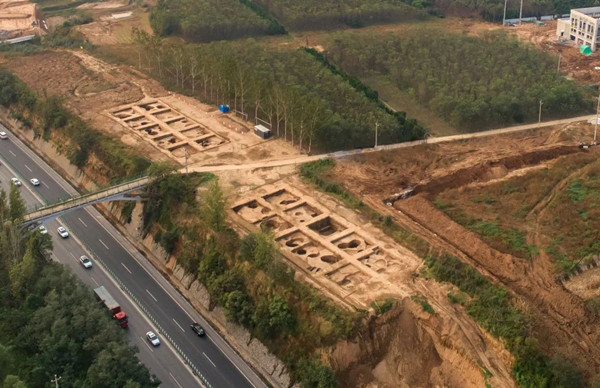Late Neolithic site excavated in Shanxi

The excavated Xiading site in Zezhou county, Shanxi province [Photo/Taihang Daily]
An archaeological site containing a large amount of relics from the Longshan Culture – a late Neolithic civilization in the middle and lower reaches of the Yellow River some 4,000 years ago – was recently confirmed, after the excavation of a construction site in North China's Shanxi province.
The remains were first discovered on the construction site to the southwest of Xiading village in Zezhou county, covering an area of more than 100,000 square meters, giving it the name of the Xiading relics site.
"The Xiading site was first discovered during the third national census of cultural relics in 2009, but at that time there was limited knowledge of the scope and cultural connotations of the site," said Wu Junhua, director of the Jin Culture Research Institute of the Shanxi Archaeological Research Institute.
In June, to cooperate with the reconstruction and expansion of the Jinyang Highway, the Shanxi Archaeological Research Institute together with local cultural relics departments restarted excavations at the Xiading site.
A total of 150 pits, two pottery kilns, eight tombs, one urn burial site and the remains of a house were discovered, after over four months of archaeological excavations.
A large amount of pottery, stone tools and bone ware was unearthed there.
According to Wu, the relics are from different eras including the Yangshao Culture, the Longshan Culture, the Erlitou Culture and the Eastern Zhou Dynasty (770-256 BC), but the artifacts from the Longshan Culture are the most prolific.



